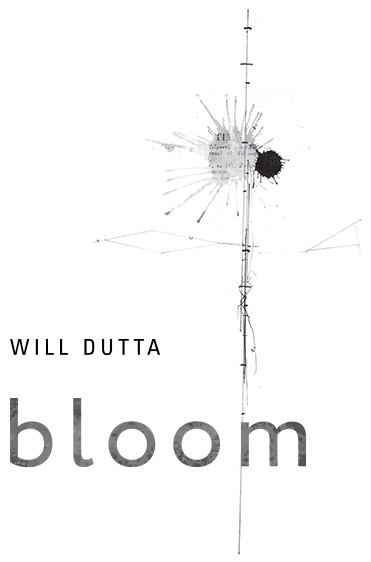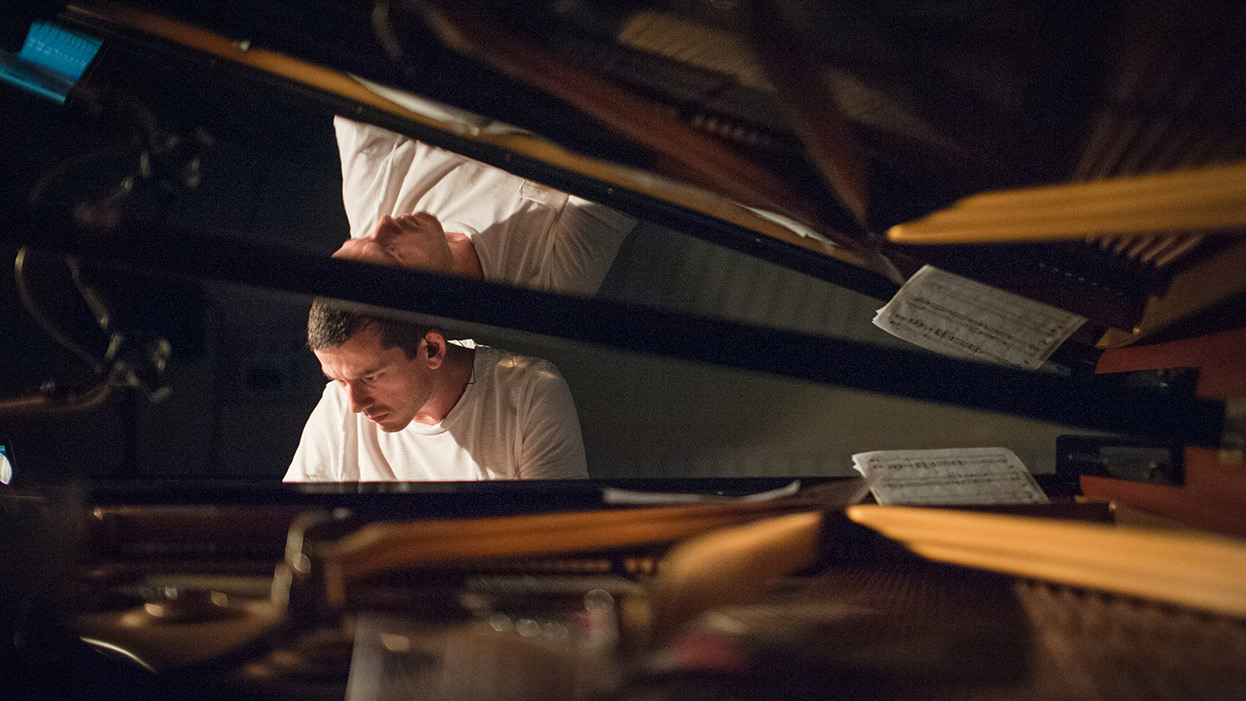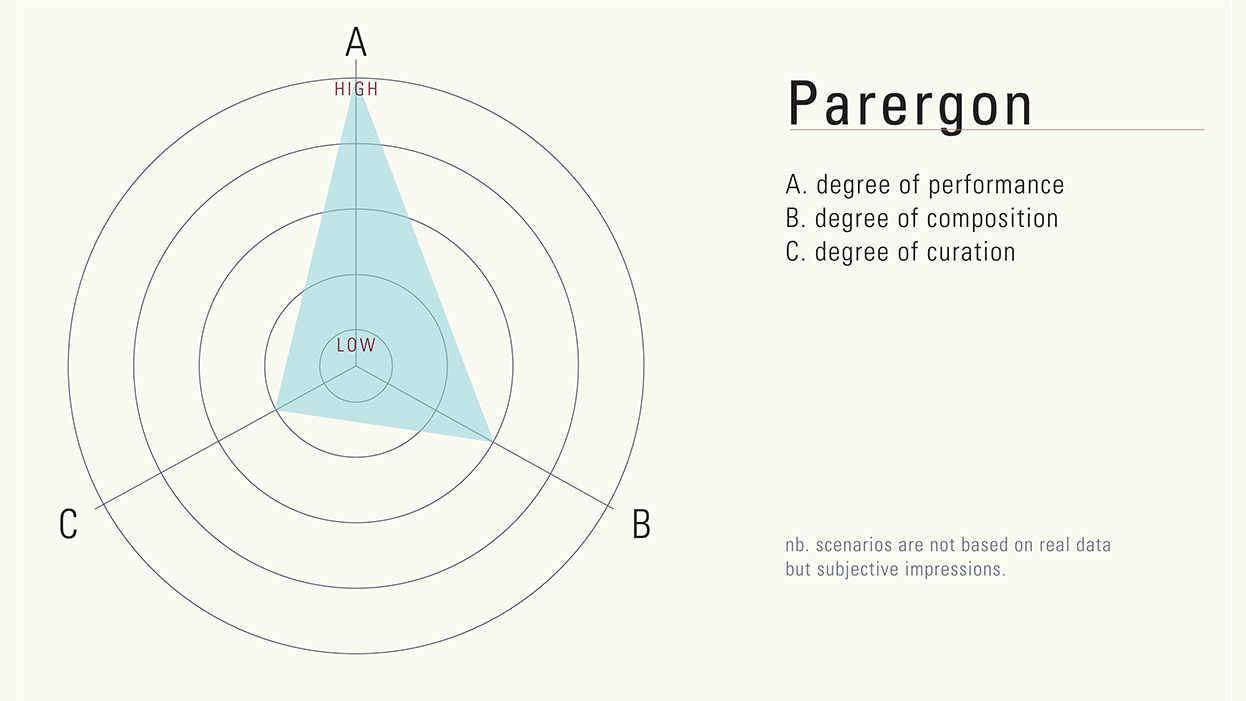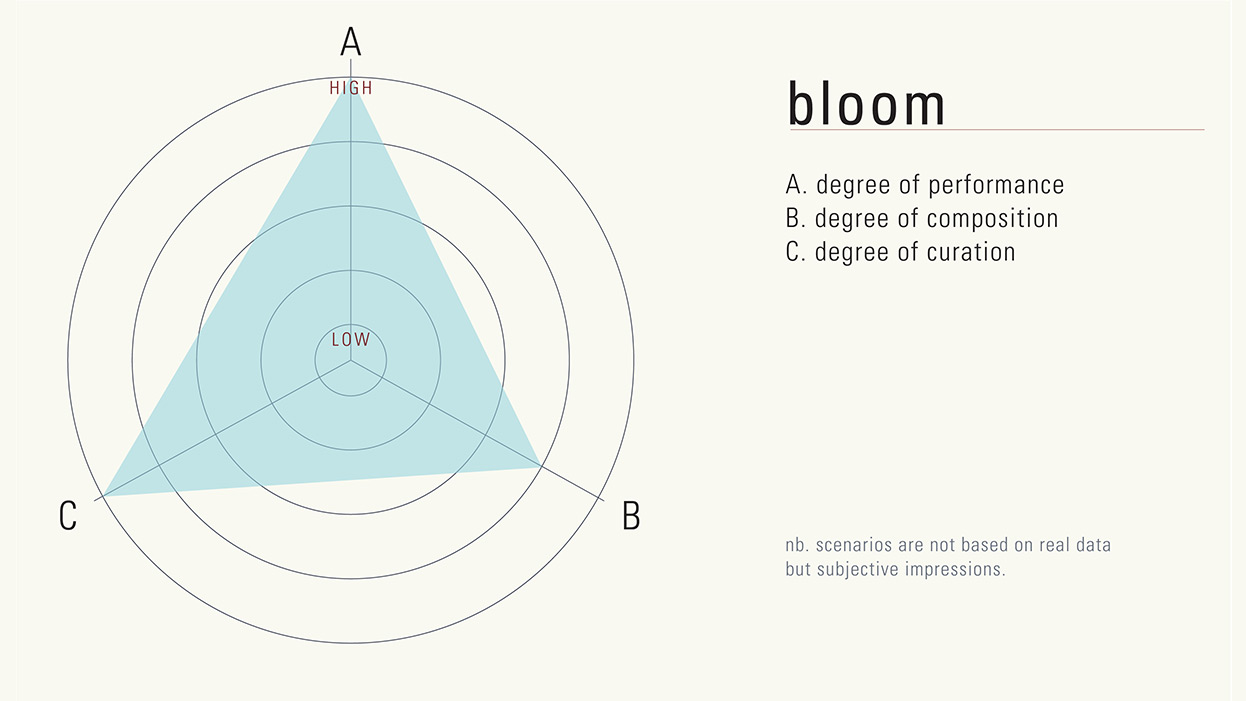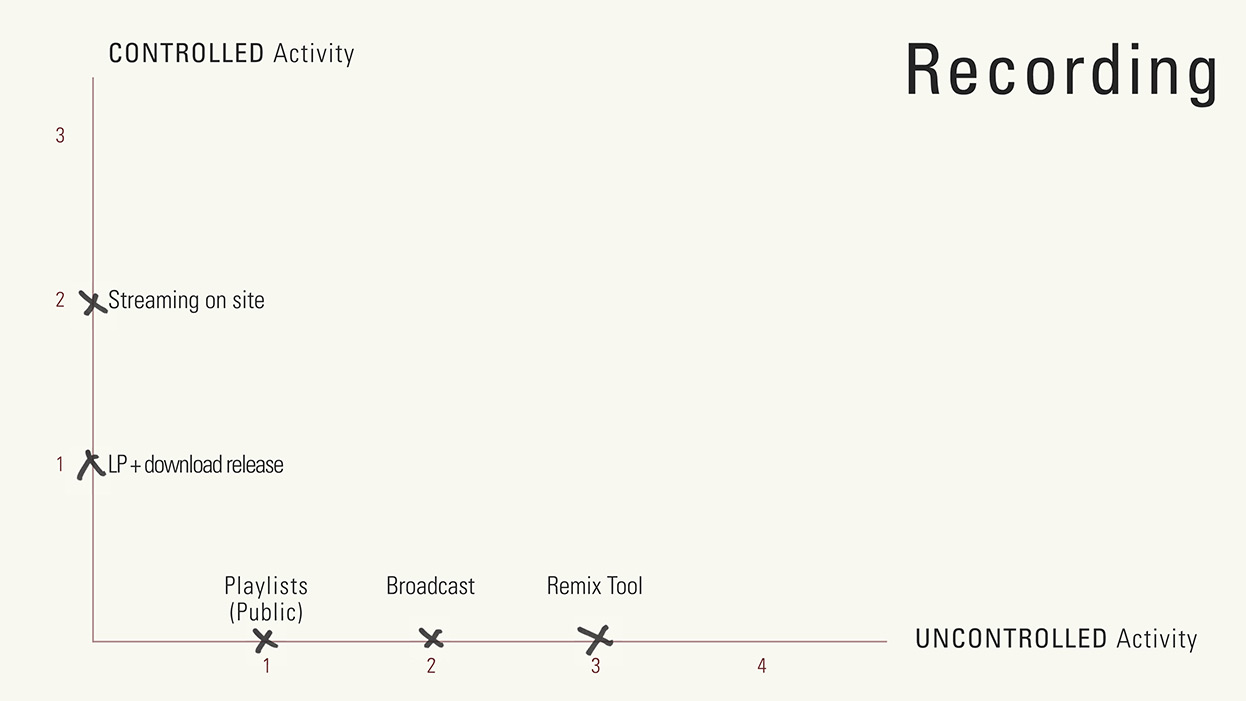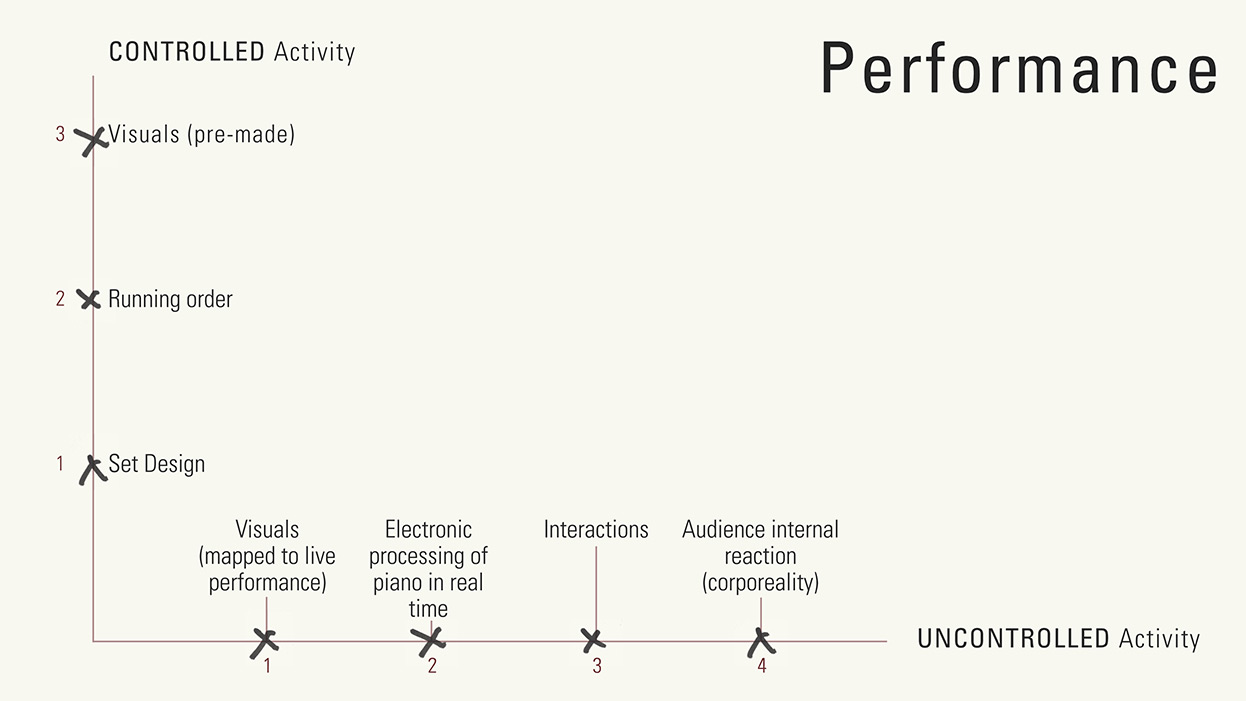Will Dutta – Curating Composer,
Performer & Researcher
Articulating the creative process can be a self-defeating exercise. It is not linear and often follows its own logic. Once committed in text it loses this untidiness and reduces the moments of chance, improvisation and luck to a singular vision of reason and
carefully planned moments.
Taking this into consideration, I have shifted the focus from a technical commentary to identify instead some of the curatorial strategies used in bringing together this project. These are strategies inherited from contemporary visual culture and the role of the curating composer first developed in my doctoral research (available at the libraries of City, University of London and Trinity Laban Conservatoire of Music and Dance and through the British Library EThOS).
The following diagrams compare the degrees to which the roles of performer, composer and curator impact the process of creating my two studio albums, Parergon (2012) and bloom (2017):
Curation plays a significantly higher role in bloom and this is seen in each of the six manifestations of the studio album project:
- Recording
- Performance
- Interactive Digital Space
- Newsletter
- Film
- Workshop
Each manifestation feeds into a dynamic system and undergoes development throughout the duration of the activity. This is an example of an iterative curatorial model. The activity is self-reflexive (it reflects on itself: it is curating about curating) and rooted
in theories of livenessLivenessFraming device that prioritises temporal co-presence over spatial co-presence as the fundamental experience of the live
between audiences and event, mediationMediationEducation based practices that include ongoing cultural dialogue between curators, artists
and audiences and/or the provision of ephemera ahead of and during exhibitions and mediatisationMediatisationTransference from one medium
to another and often associated with artistic dissemination and distribution.
I also consider how much of the activity is controlled or not. Each manifestation can be given two axes where the activity on the vertical axis is controlled and the horizontal uncontrolled (or unregulated). For example, in the performance activity, bloom LIVE,
much of the event is regulated by the activity taking place on stage. However, the interactions between performer-spectator and spectator-spectator are unique, unregulated and specific to the live moment. Here are some more examples:
My curatorial impulse is to balance controlled and uncontrolled activity. Too controlled and it becomes a passive experience. Conversely, too much unregulated activity, see for example La Monte Young’s Composition 1960, tends to the extreme.
Running in parallel to the iterative model is a second curatorial strategy based on Brian Eno’s concept of Edge Culture. Eno abandons the idea that culture has a single centre and is instead ‘an urban sprawl of culture objects joined by the journey
we make between them’ (Eno, 1996, p.328).
The urban sprawl of music in bloom includes new and existing compositions by Max de Wardener and David Lang respectively. This is expanded further in bloom LIVE. In doing so I want to make visible a series of temporary connections between pieces that
are negotiable and that avoid notions of absolute value. The listener or spectator may decide to construct his or her own series or suggest alternative music.
The strategies introduced above show the curating and composing choices and decisions have a direct influence on one another and the final outcome is a coherent composite whole. Theory drives practice but should not dominate it. Fundamentally, the strength of the studio
album project must be in the music it commissions and presents.
www.studiowilldutta.art
